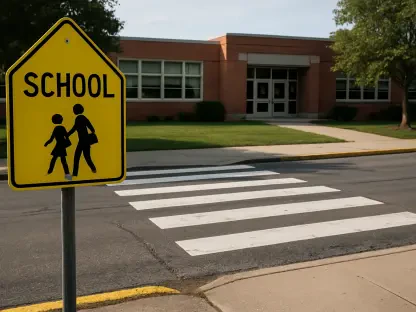In an unexpected turn of events, the Trump administration has decided to withhold $6.8 billion in federal funding allocated for K-12 education nationwide, with severe implications for school districts across the country. Colorado schools anticipated receiving $70 million for the 2025-26 academic year, designated for essential programs such as English language learning, teacher training, and after-school initiatives. The sudden announcement, communicated to state officials last Monday, has caused significant distress among educators and policymakers as districts scramble to address looming budget shortfalls and potential negative impacts on students and teachers.
Financial Constraints for Colorado Schools
Budgetary Constraints and Educational Impact
The abrupt withholding of federal funds has placed an enormous strain on Colorado’s educational budget, leading to widespread concern among educators and policymakers. Without the anticipated $70 million, many school districts in Colorado will face severe financial pressures that could necessitate deep budget cuts. These cuts threaten to disrupt student-related programs and vital educational services. Denver Public Schools, one of the largest districts in the state, now faces a potential deficit of $10 million to $15 million. This shortfall could result in the reduction of instructional staff, elimination of various student programs, and adverse effects on the quality of education provided to the city’s 90,000 students.
The withheld funds were critically allocated for programs aiding students with language barriers and those in need of additional academic support. By freezing these funds, the Trump administration’s actions complicate the efforts of schools to provide equitable access to quality education for all students, particularly those from underserved communities. School districts have already finalized their budgets for the academic year, leaving them with little flexibility to accommodate this sudden financial gap. This situation underscores the current administration’s educational policy priorities, which emphasize reduced federal involvement, leaving states and localities to make difficult decisions in managing education with limited resources.
Collaboration to Address the Funding Challenge
In response to this unexpected financial challenge, efforts are being made at various levels of government to seek clarity and potentially remedy the situation. Colorado Education Commissioner Susana Córdova is working closely with Governor Jared Polis and the state’s congressional delegation to understand the rationale behind this decision and explore possible avenues for relief. The Commissioner has expressed urgent concerns regarding the potential negative impacts on students and educators, notably emphasizing the need for advocacy and negotiation at the federal level.
The collaborative approach aims to secure any possibility of releasing the withheld funds or finding alternative funding solutions to counteract the financial disruption facing schools. State policymakers and educational authorities are focused on ensuring that students’ educational experiences and outcomes are not compromised due to these budgetary constraints. The ongoing discussions highlight an inherent tension between federal and state roles in educational oversight and funding, with stakeholders examining pathways for achieving a more balanced approach that sustains critical educational services.
Broad Policy Implications
Shifting Federal Educational Priorities
The Trump administration’s decision to withhold this significant amount of education funding is indicative of a broader policy agenda aimed at diminishing federal involvement in public school systems. This shift is reflected in the administration’s 2026 budget proposal, which advocates for the elimination of certain contested programs altogether—programs that many educators argue are essential to maintaining equitable educational standards across the nation. Critics of this policy direction argue that it undermines necessary services for vulnerable student populations, such as immigrant children, low-income families, and learners requiring specialized instruction in English language proficiency.
By redirecting federal education priorities, the current administration’s approach has contributed to ongoing debates surrounding the optimal balance of responsibility between federal and state authorities in educational governance. Proponents of increased state autonomy argue that localities possess a greater understanding of their community needs, while opponents counter that diminished federal oversight could lead to disparities in educational quality and access across different states. The policy and funding adjustments underline the complexities of navigating competing interests and objectives within the educational landscape.
National and State Educational Landscape
The national discourse surrounding federal and state educational roles comes at a time when public schools are already grappling with various challenges. Amidst the broader educational policy shifts, school districts continue to face rising costs, technological advancements, and changing student demographics, requiring adaptive measures to effectively manage limited resources. The current withholding of federal funding further exacerbates these pressures, pushing schools to reassess their priorities and delivery strategies.
Organizations such as the Afterschool Alliance and education advocacy groups express profound concern over the long-term implications of reduced federal funding. They argue that cutting such crucial programs could hinder the preparation of students for future workforce demands, leading to broader economic ramifications. As states navigate these policy changes, educational stakeholders are called to explore innovative solutions that address immediate funding shortages while ensuring the continuous advancement of educational goals. State and national leaders are being encouraged to foster dialogue and collaboration that transcend partisan divides, focusing instead on sustaining an education system that meets the diverse needs of all learners.
Navigating Future Educational Policy
In a surprising development, the Trump administration has opted to withhold $6.8 billion in federal funding intended for K-12 education across the United States, presenting serious challenges for school districts nationwide. Colorado schools, which had expected to receive $70 million for the 2025-26 academic year, are particularly concerned as these funds were earmarked for critical programs such as English language learning, teacher training, and after-school activities. The abrupt notice, delivered to state officials last Monday, has sparked considerable anxiety among educators and policymakers. School districts are now faced with the urgent task of managing impending budget shortfalls and addressing the potential adverse effects on both students and teachers. This decision is not only a financial setback but poses a threat to the quality of education, potentially affecting student outcomes and placing additional pressure on already stretched educational resources and staff.









